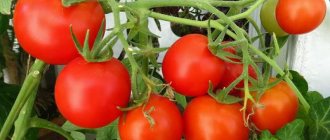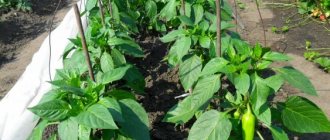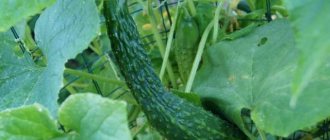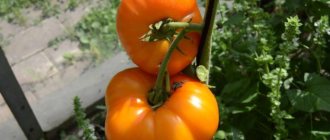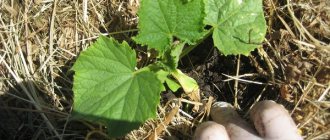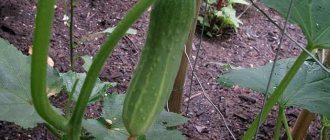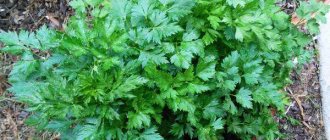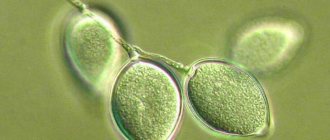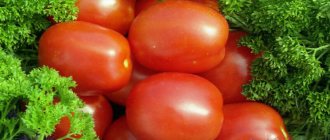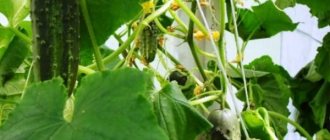What are green manures and why are they needed?
Industrial crops that are grown to enrich the soil with nutrients and improve its structure are called green manures or “green fertilizers.”
Green manure plants are planted using one of the following methods::
- between rows between crops;
- as an early culture among later ones;
- at the end of summer or before winter;
- for the whole year while the soil is resting from intensive use.
Green manure is mowed before or shortly after flowering and, after rotting, plowed into the ground.
Attention! Do not confuse green manure with weeds. Useful plants turn into weeds when the moment for mowing is missed and they have time to bloom and produce seeds.
The benefits of green manure for cucumbers
Sowing green manure plants before planting cucumbers restores soil fertility naturally and increases productivity. During the growth and subsequent decay of “green fertilizers” :
- the soil is enriched with nutrients: nitrogen, potassium, phosphorus and microelements;
- the soil is structured: the roots of green manure penetrate deep, loosen and improve aeration;
- soil microorganisms that fix nitrogen accumulate on dead roots;
- light sandy soils are bound and protected from erosion and weathering;
- the roots of beneficial plants deliver nutrients from the deep layers of the earth to the surface where the root system of cucumbers is located.
Planting green manure in between rows or around beds is useful.:
- their dense foliage, shading the soil, slows down the evaporation of moisture and inhibits the growth of weeds;
- companion plants repel or distract some of the cucumber pests;
- Most green manure plants are honey plants that attract bumblebees and bees, which also pollinate cucumbers.
It can be useful:
How to increase the yield of cucumbers in open ground
What to do if cucumbers grow crochet
What to do with empty flowers on cucumbers in a greenhouse
Benefits for garden plants, vegetables
In addition to influencing the quality of the soil layer, green manures are effective as predecessors for various garden plantings. They prepare the ground for planting seedlings and prevent the appearance of weeds. Many vegetables are not planted in early spring, but during a period of persistent warming, so cold-resistant green fertilizers (phacelia, mustard, rapeseed) will retain moisture in the soil and make it loose and soft. In addition, they can protect against unexpected frosts and be used as mulch.
Clover as green manure
Another useful property is attracting bees to pollinate flowering vegetable crops and garden trees. Some green manures are honey plants and attract a huge number of worker bees to the site. Thanks to this, the number of barren flowers is significantly reduced, which will increase the yield.
Most green manure grasses have an active effect on garden pests. Thus, a mixture of barley or oats with legumes can reduce the number of Colorado potato beetles in potato crops. Phacelia mixed with mustard is effective against wireworms (a pest of tuberous plants). Nightshade vegetable plants do well next to calendula or flax.
To grow cabbage strong and healthy, you need to think about planting legumes. They will saturate the soil with nitrogen, protect cabbage seedlings from nematodes, and create a special microclimate on the site.
Phacelia and flax are effective against late blight (the scourge of nightshade crops). Sweet clover and lupine will save plants from root rot
Important! To prevent the plants themselves from becoming weeds, which are difficult to control, as a result of green manure, it is necessary to mow them until they fully grow and flower. Otherwise, it will be difficult to remove them (especially if the ripe seeds fall into the ground)
What green manure is best to plant before cucumbers in the fall?
It is recommended to sow plants that do not require heat , quickly (in 1–1.5 months) gaining green mass and rotting easily in winter. They have these qualities:
- White mustard. It quickly increases mass, heals the soil, prevents the appearance of cruciferous flea beetles and slugs, and cleanses the soil of spores of pathogenic fungi.
- Oilseed radish. Grows quickly, increases soil fertility, and prevents fungal and viral diseases.
- Cold-resistant phacelia. A universal green manure that rapidly accumulates biomass. Easily decomposes, makes the soil nutritious and loose.
- Oats. Enriches the soil with nutrients and minerals.
On a note. 10 acres of mown phacelia replace 300 kg of manure.
Planting cucumber seeds in mustard
Green fertilizers all year round
Planting in a greenhouse is the most profitable option for a gardener and at the same time more difficult. Due to the constant cultivation of crops, the soil in the greenhouse is quickly depleted and does not have time to recover, and gardeners are unlikely to want to spend 2-2.5 months growing green manure and plowing it into the soil.
Tips on how to grow cucumbers in greenhouse conditions
Still, if possible, it is necessary to give the soil a break by planting green manure in the greenhouse alternately with cucumbers. They can also be sown in early spring or late autumn, and it is good to use oats: they gain useful mass in 30-40 days and do not waste time. But it’s better not to plant rye in a greenhouse: during growth, it releases substances that have a bad effect on weeds and many weak crops, which include cucumbers.
What crops are best not to plant under cucumbers?
In the open ground
It is better to plant more cold-resistant plants in open beds : winter rye, oilseed radish, phacelia.
When choosing green manure, it is worth considering the type of soil on the site:
- Phacelia and oilseed radish are ideal for depleted, sandy soils;
- heavy clay soil is softened by legumes and grains.
On a note. Experienced vegetable growers sow beds with mixtures of green manure plants. Plants complement each other, the fertilizer is more balanced.
In the greenhouse
When growing cucumbers in a greenhouse or greenhouse, observing crop rotation is problematic . If you can enrich the soil with nutrients using organic and mineral fertilizers, it is difficult to cope with the accumulation of pests and pathogens.
In this case, mustard is indispensable . The green mass of the plant disinfects and saturates the soil with nutrients. When greening in greenhouses, good results are shown by watercress and oats, which are characterized by high growth rates.
Attention! When using the same “green fertilizer” from year to year, the soil is oversaturated with some substances and lacks others. Green manure must be alternated.
The subtleties of growing cucumbers
A moisture-loving plant belonging to the pumpkin family, it prefers warm, heated soil rich in organic matter. For the growth and development of cucumbers, the optimal temperature is 22–26 °C. They stop growing at temperatures below 12–14 °C and above 42 °C. The root system is located in the surface layer at a depth of 20–30 cm. Lateral roots extend from the main taproot, located close to the surface.
When loosening in open ground, roots can be easily damaged. This operation should be carried out very carefully. In a greenhouse or greenhouse, the root system is weaker. Often the roots come to the surface, so loosening is not practiced, but instead, after watering, soil is poured between the rows. Cucumbers do not tolerate transplanting and picking well. It is better to grow seedlings in separate pots and plant them when 4–5 true leaves appear.
Cucumbers do not grow on acidic soils; preliminary liming is required. Ground eggshells are often used for this. Poor soils are also not suitable for cucumbers. The beds are prepared in advance, enriched with organic matter. Plants love warm, heated soil, so it is recommended to make high beds oriented from east to west, protected from the wind. In the middle zone, cucumber seeds are planted in early June. You can sow them dry or pre-treated. Wet seeds must be sown in damp soil.
How to properly plant green manure for cucumbers in the fall
Autumn green manure is planted after the harvest is complete , usually from mid-August to mid-September. There are several reasons to sow them in the fall:
- Saving time in spring. There is no need to plant and wait for them to germinate to prepare your beds.
- Green manure plants stay on the site longer, their root system better loosens the soil and additionally saturates it with oxygen.
- Protecting the soil from drying out and frost. Green manure remaining on the surface retains snow and moisture longer.
Let's sum it up
Green manure is grown to restore and increase soil fertility, improve its structure, and increase the number of beneficial soil microorganisms. Green manure plants are unpretentious, quickly grow green mass, and rot easily.
Autumn green manure is usually carried out on cucumber beds. Useful plants are sown densely throughout the area after harvesting, allowed to grow and left until spring. In the spring, after regrowth, they are mowed down and left to decompose. Then the beds are dug up and cucumbers are planted after 2-3 weeks.
Most often, white mustard, legumes, cereals, and mixtures of these plants are used for cucumbers. Cucumbers have no special requirements for green manure, but after them it is better to prepare the soil for other crops using mustard or vetch-oat mixture.
Which SIDERATS are better? All the SECRETS of proper sowing
Green fertilizers in spring
Green manure can be planted immediately before planting the main crop. To do this, they are planted in the garden already in April, when the snow melts and the night cold stops. The ground is plowed and seeds are planted, scattering them all over the ground and lightly pressing them down. For faster germination, the bed can be covered with a transparent film to create a greenhouse effect. Plants do not require special care and easily tolerate frost.
When they grow 10-15 cm, cucumber sprouts are planted between them at a distance from each other. Tall plants will help protect the tender shoots from the sun and wind. When the cucumbers get stronger and grow, and green manure begins to bloom, the latter are cut off and left on the beds so that they rot and turn into fertilizer.
You can also cut the plants 1-2 weeks before planting cucumbers and also leave them in the garden for additional nutrition. This is done so that more hardy green fertilizers do not destroy all the nutritional elements of the main crop.
